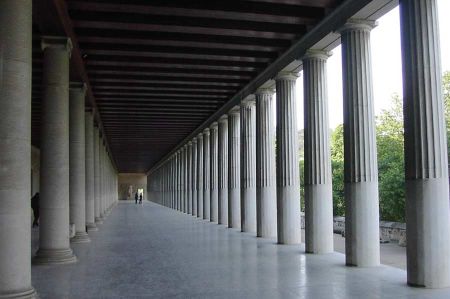Stoa - Scientific teaching building and worldview
- Written by Portal Editor
In the history of Greek architecture, the term Stoa means a building that is usually located in the center of the city and was used for scientific and philosophical teaching purposes.
Here the researchers and scientists, scholars and other theoreticians and practitioners had their "home" to pursue their teaching activities, just a "university think tank" as one would say today. The advantage of this concentration of knowledge in one place was always the direct exchange of ideas between thinkers/scientists and students/pupils, since communication could take place.
The Greek Zenon of Kition is considered to be the founder of the Stoa, who was the first to found such a philosophical body of teaching. The advantages for the rulers of the respective cities quickly became clear and similar buildings were erected in many cities: Nysa, Priene, Miletus, Kaunos and Didyma. A veritable "run" on the philosophers began, because every ruler wanted to have the "top people" in his city if possible. So generous stoa were built and equipped accordingly.
The name itself goes back to a painted portico on the Agora in Athens, where Zeno began teaching around 300 BC. Far more than just a normal "teaching activity", Zeno also developed a world view that referred to the holistic view of the world, the Stoic philosophy. In his opinion, there is a universal principle in all natural phenomena and their natural connections, which leads to a holistic approach.
For the human being as an individual, it is important to find and fill his place in this order accordingly, whereby the individual should also be able to accept his fate through emotional self-control, but not in order to surrender to his fate without will, but to calmly and with to learn the necessary peace of mind and to become wise.
We still use the term stoic today when we describe a philosophically thinking person: his character is of "stoic calm", for example.
Please read as well:
